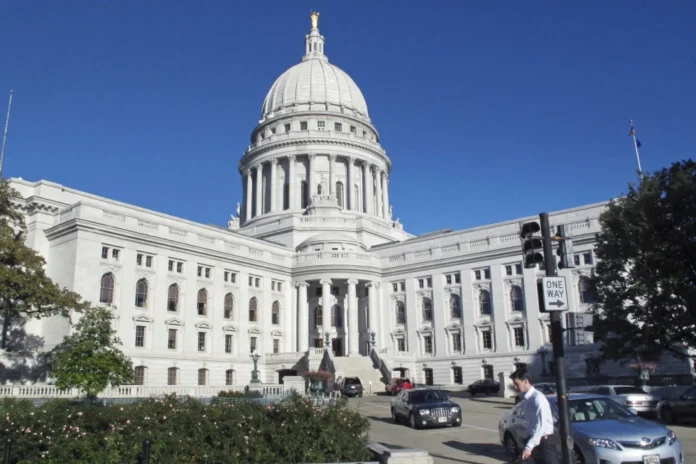If the practice of fusion voting, which permits the same candidate to appear on the ballot under several party lines, returns to the battleground state of Wisconsin, voters there may see two candidates on Election Day.
At a time when Republicans and Democrats are becoming more and more polarized, a lawsuit was launched on Tuesday to legitimize the practice, arguing that it would provide influence to independent voters and smaller political parties. Only four weeks have passed since the record-breaking Wisconsin Supreme Court election, in which both major parties and special interests spent heavily. This has led to the lawsuit’s filing.
During the 1800s, fusion voting was common. It allowed candidates to be nominated by many lesser-known political parties in addition to the more well-known Republican and Democratic parties. Opponents say it makes voting more difficult and might confuse voters, and that it gives minor parties too much influence as candidates from larger parties have to court them to get their support.
At this time, just two states—Connecticut and New York—are using complete fusion voting. Michigan, Kansas, and New Jersey are among the places where the practice is being revived.
The recently established United Wisconsin organization is suing to have the nomination process recognized as constitutional, regardless of whether the candidate was nominated by the Republican or Democratic parties. Fusion voting allows for the possibility of “John Doe, Democrat” and “John Doe, Green Party” appearing on the same ballot. The candidate’s total is the sum of all their votes, which are fused together.
Dale Schultz, a former Republican Senate majority leader and current co-chair of United Wisconsin, stated that the group’s goal is to merge with another political party so that candidates from both major parties can be nominated.
According to him, the first thing that has to be done is for the state courts to confirm that their ability to associate with whoever they want is constitutional. A former Democratic county sheriff and a retired judge who was also a Republican state representative are among the five plaintiffs listed in the complaint, which also includes Schultz.
The case, which was lodged in Dane County Circuit Court against the Wisconsin Elections Commission, contends that the state’s almost 130-year-old ban on candidates being on the ballot more than once for the same position is in violation of the constitution.
Joel DeSpain, a spokesman for the Wisconsin Elections Commission, chose not to address the case.
United Wisconsin is being represented in the case by Attorney Jeff Mandell of Law Forward. Mandell stated that voters need additional alternatives and characterized the present two-party system as “calcified and deeply unstable.”
The idea was vehemently opposed by Anika Rickard, a spokesman for the Wisconsin Republican Party, who warned that people may be “manipulated into voting for a major party candidate masquerading as an independent.”
“Fusion voting is simply dishonest, will be an election integrity nightmare, and will be used to confuse voters,” she stated.
The Wisconsin Democratic Party’s Haley McCoy chose not to comment.
The Green Party’s presidential nominee Jill Stein and independent Cornel West were both attempted and failed to be removed from the ballot by the Wisconsin Democratic Party last year. Opposition candidates from third parties were seen by Democrats as a threat to the support of then-Vice President Kamala Harris. Wisconsin went to President Trump by a margin of almost 29,000 votes. Together, Stein and West received almost 15,000 votes.
In the United States, fusion voting was prevalent in the 1800s, when political parties could freely nominate their favorite candidates. In 1854, during a convention in Wisconsin, anti-slavery Democrats and Whigs, together with lesser groups, came together to form what would later be known as the Republican Party. This practice played a role in their formation.
The complaint states that the Republican Party, in an effort to limit the growth of other political parties and undermine the Democratic Party, passed a ban on fusion voting in Wisconsin in 1897, which was less than half a century later. According to United Wisconsin, that goes against the state constitution’s equal protection provision.
In an effort to curb the influence and rivalry from smaller parties, similar anti-fusion legislation started to gain traction across the country in the early 1900s.
